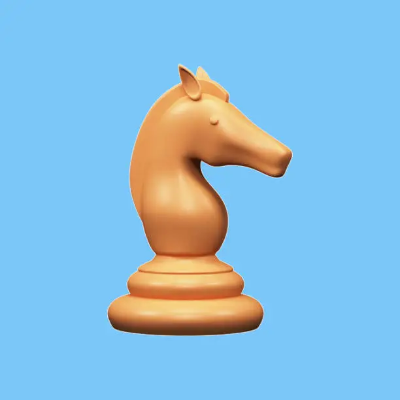Browse
Disciplinary Content
Posted on: #iteachmsu


Posted by
over 1 year ago
9 Types of Time Management Techniques
Achieving work life balance is possible with effective time management. Learning time management tips will not only help you manage your time better but also boost personal productivity. With that said, here are some time management strategies you can try:
1. Pareto Analysis (a.k.a., the 80/20 rule)
The 80/20 rule is a technique created by the Italian economist Vilfredo Pareto. It’s the idea that 20% of actions are responsible for 80% of outcomes. The goal of Pareto analysis is to help you prioritize tasks that are most effective at solving problems.
How it works:
List some of the problems you are facing. For example, maybe your grades are slipping.
Identify the root cause of each problem. Maybe your grades are slipping because you spend too much time on social media or any other sort of distraction.
Assign a score to each problem: Assign higher numbers to more important problems
Group problems together by cause: Group together all the problems caused by spending too much time on social media.
Add up the score of each group: The group with the highest score is the issue you should work on first.
Take action.
Types of people who will benefit from Pareto Analysis:
Problem solvers
Analytical thinkers
2. Pomodoro Technique
The Pomodoro Technique was created by entrepreneur and author Francesco Cirillo. This technique uses a timer to break down your work into intervals. Each interval is known as a Pomodoro, named after the tomato-shaped timer that Cirillo created.
How it works:
Choose a task you need to get done.
Set a timer (e.g., for 25 mins).
Focus on the task at hand.
When the timer rings, put a checkmark on a piece of paper.
Take a short break: Take a break for about three to five minutes. Go for a walk, grab a cup of coffee, do something non-work-related to give your brain a break.
Repeat steps two to five: Once you have completed this process four times, you can begin to take longer breaks (20–30 mins).
Types of people that will benefit from the Pomodoro Technique:
Creative thinkers
Those who feel burnt out from work/school
The Pomodoro technique doesn’t just teach your time management; it also teaches you in setting goals and how to achieve them. You’ll be able to better stick to your daily schedule and weekly schedule.
3. Eisenhower Matrix
Before Dwight Eisenhower became president in 1953, he served in the U.S. Army as an Allied Forces Commander during World War II. He was faced with difficult decisions every day that led him to invent what is now called the Eisenhower matrix, or the urgent-important matrix.
How it works:
Organize your task list into four separate quadrants, sorting them by important vs. unimportant and urgent vs. not urgent, as shown in the graphic below. Urgent tasks are those we feel need to get done immediately. Important tasks are those that contribute to your long term goals or values. Ideally, you should only work on tasks in the top two quadrants—the other tasks, you should delegate or delete.
Achieving work life balance is possible with effective time management. Learning time management tips will not only help you manage your time better but also boost personal productivity. With that said, here are some time management strategies you can try:
1. Pareto Analysis (a.k.a., the 80/20 rule)
The 80/20 rule is a technique created by the Italian economist Vilfredo Pareto. It’s the idea that 20% of actions are responsible for 80% of outcomes. The goal of Pareto analysis is to help you prioritize tasks that are most effective at solving problems.
How it works:
List some of the problems you are facing. For example, maybe your grades are slipping.
Identify the root cause of each problem. Maybe your grades are slipping because you spend too much time on social media or any other sort of distraction.
Assign a score to each problem: Assign higher numbers to more important problems
Group problems together by cause: Group together all the problems caused by spending too much time on social media.
Add up the score of each group: The group with the highest score is the issue you should work on first.
Take action.
Types of people who will benefit from Pareto Analysis:
Problem solvers
Analytical thinkers
2. Pomodoro Technique
The Pomodoro Technique was created by entrepreneur and author Francesco Cirillo. This technique uses a timer to break down your work into intervals. Each interval is known as a Pomodoro, named after the tomato-shaped timer that Cirillo created.
How it works:
Choose a task you need to get done.
Set a timer (e.g., for 25 mins).
Focus on the task at hand.
When the timer rings, put a checkmark on a piece of paper.
Take a short break: Take a break for about three to five minutes. Go for a walk, grab a cup of coffee, do something non-work-related to give your brain a break.
Repeat steps two to five: Once you have completed this process four times, you can begin to take longer breaks (20–30 mins).
Types of people that will benefit from the Pomodoro Technique:
Creative thinkers
Those who feel burnt out from work/school
The Pomodoro technique doesn’t just teach your time management; it also teaches you in setting goals and how to achieve them. You’ll be able to better stick to your daily schedule and weekly schedule.
3. Eisenhower Matrix
Before Dwight Eisenhower became president in 1953, he served in the U.S. Army as an Allied Forces Commander during World War II. He was faced with difficult decisions every day that led him to invent what is now called the Eisenhower matrix, or the urgent-important matrix.
How it works:
Organize your task list into four separate quadrants, sorting them by important vs. unimportant and urgent vs. not urgent, as shown in the graphic below. Urgent tasks are those we feel need to get done immediately. Important tasks are those that contribute to your long term goals or values. Ideally, you should only work on tasks in the top two quadrants—the other tasks, you should delegate or delete.
Posted on: #iteachmsu


Posted by
over 1 year ago
Video Production Are you thinking about incorporating video into your courses? Check out this site to learn about the available options and campus resources.
https://hub.msu.edu/video-production-support/
https://hub.msu.edu/video-production-support/
Disciplinary Content
Posted on: #iteachmsu



Posted by
over 1 year ago

Predominantly inattentive type.
The student may:
o submit inaccurate or incomplete work,
o have difficulty attending to conversations, activities, or tasks,
o be easily distracted,
o have difficulty following directions,
o frequently lose materials, and/or
o have difficulty organizing tasks and materials.
Predominantly hyperactive/impulsive type.
The student may:
o Appear to be in constant motion,
o frequently fidget or move in his or her seat,
o become restless during quiet activities,
o leave his or her seat when expected to remain seated,
o interrupt others and classroom activities,
o talk excessively, and/or
o fail to follow classroom procedures (e.g., blurt out answers without raising hand). Edited
The student may:
o submit inaccurate or incomplete work,
o have difficulty attending to conversations, activities, or tasks,
o be easily distracted,
o have difficulty following directions,
o frequently lose materials, and/or
o have difficulty organizing tasks and materials.
Predominantly hyperactive/impulsive type.
The student may:
o Appear to be in constant motion,
o frequently fidget or move in his or her seat,
o become restless during quiet activities,
o leave his or her seat when expected to remain seated,
o interrupt others and classroom activities,
o talk excessively, and/or
o fail to follow classroom procedures (e.g., blurt out answers without raising hand). Edited
Disciplinary Content
Posted on: Predominantly hyperactive/impulsive type.


Posted by
over 1 year ago
Combined type.
The student may exhibit symptoms that include behaviors from both categories above.
In order for a student to be diagnosed with ADHD, symptoms must appear before age 12 and be exhibited across at least two settings. They must also have adverse effects on academic performance, occupational success, or social-emotional development (APA, 2013).
To add to the complexity of the diagnosis, children with ADHD are likely to have co-existing emotional, behavioral, developmental, learning, or physical conditions (Wolraich & DuPaul, 2010).
The student may exhibit symptoms that include behaviors from both categories above.
In order for a student to be diagnosed with ADHD, symptoms must appear before age 12 and be exhibited across at least two settings. They must also have adverse effects on academic performance, occupational success, or social-emotional development (APA, 2013).
To add to the complexity of the diagnosis, children with ADHD are likely to have co-existing emotional, behavioral, developmental, learning, or physical conditions (Wolraich & DuPaul, 2010).
Posted on: #iteachmsu


Posted by
over 1 year ago
Praise, Praise, Praise: Attentiveness and appropriate classroom behavior are
prerequisites for learning; therefore, interventions that promote these behaviors
should be an integral part of the teaching process for all students. When teachers
are attentive to positive behavior and specifically praise students for these
behaviors, they can engage students before their attention drifts while highlighting
desired behavior (U.S. Department of Education, 2006).
prerequisites for learning; therefore, interventions that promote these behaviors
should be an integral part of the teaching process for all students. When teachers
are attentive to positive behavior and specifically praise students for these
behaviors, they can engage students before their attention drifts while highlighting
desired behavior (U.S. Department of Education, 2006).
Disciplinary Content
Posted on: #iteachmsu



Posted by
over 1 year ago

Building Event Memory, Associating Things & Situations -- Testing
Kids these days use their smartphones very dexterously, and photos are their favourite part. Although I have limited her total gadget time (phone, iPad, TV) to 30-45 minutes, I make good use of the photos she sees to build her event memory. Whenever she sees some old photos, I describe to her the event. I tell her who all were present, which places we had visited, etc. After several repetitions, this activity has helped her build a memory of past events. She also recognises people from the photos even if she meets them after a long time. She has learned to associate certain things with specific events like lanterns with Diwali or Santa Claus with Christmas. Edited
Kids these days use their smartphones very dexterously, and photos are their favourite part. Although I have limited her total gadget time (phone, iPad, TV) to 30-45 minutes, I make good use of the photos she sees to build her event memory. Whenever she sees some old photos, I describe to her the event. I tell her who all were present, which places we had visited, etc. After several repetitions, this activity has helped her build a memory of past events. She also recognises people from the photos even if she meets them after a long time. She has learned to associate certain things with specific events like lanterns with Diwali or Santa Claus with Christmas. Edited
Disciplinary Content
Posted on: #iteachmsu


Posted by
over 1 year ago
Faculty/Staff with Undergraduate Learning Assistants (ULAs) - We are piloting some resources to help prepare ULAs and Faculty/Staff with ULAs for being in the classroom. You can find some guidance and resources here: https://ulaatstate.commons.msu.edu/ More to come!
Disciplinary Content
Posted on: #iteachmsu



Posted by
almost 2 years ago

Pollination
Pollination is the process in which the pollens are transferred from anther to stigma. The process of pollination can occur through a different medium.
The table mentioned below describes the different types of pollination along with their pollinating agents.
Pollination Process Pollination Medium
Malacophilous By snails
Chiropteriphilous By bats
Hydrophilous By water
Zoophilous By animals
Anemophilous By air
Entomophilous By insects
Ornithophilous By birds
Also Read: What is Pollination
For more detailed information on parts of a flower, its functions and its importance, explore at BYJU’S Biology.
Pollination is the process in which the pollens are transferred from anther to stigma. The process of pollination can occur through a different medium.
The table mentioned below describes the different types of pollination along with their pollinating agents.
Pollination Process Pollination Medium
Malacophilous By snails
Chiropteriphilous By bats
Hydrophilous By water
Zoophilous By animals
Anemophilous By air
Entomophilous By insects
Ornithophilous By birds
Also Read: What is Pollination
For more detailed information on parts of a flower, its functions and its importance, explore at BYJU’S Biology.
Disciplinary Content
